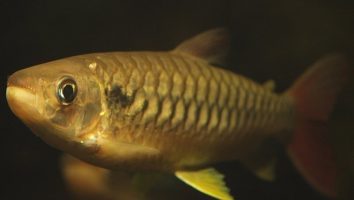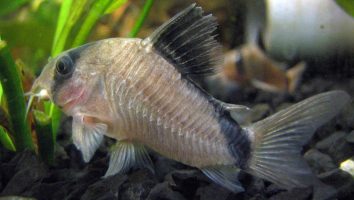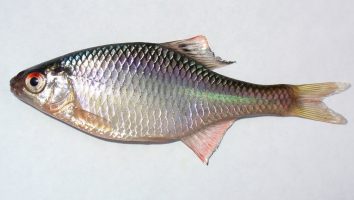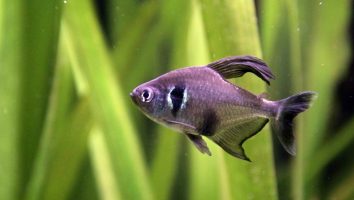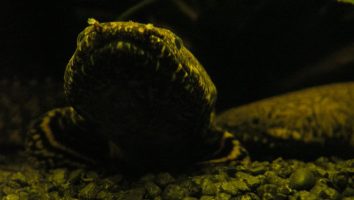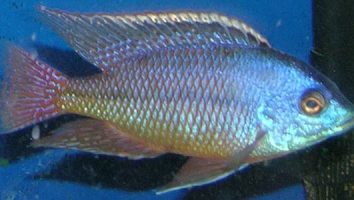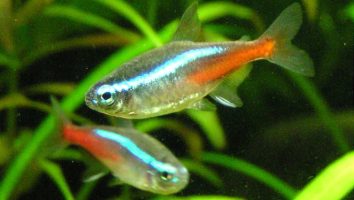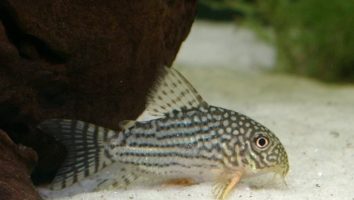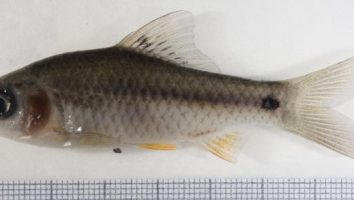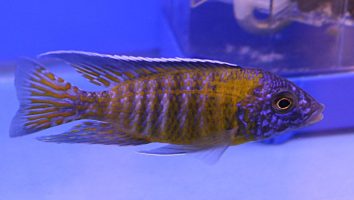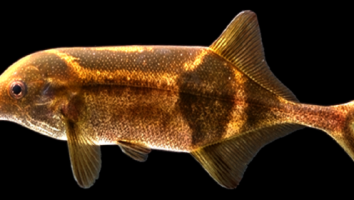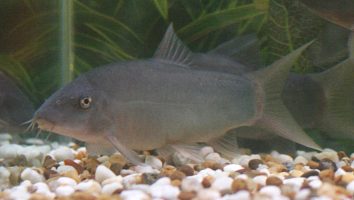Panda corydoras are an absolutely gorgeous freshwater fish that are perfect for beginner aquarists.
Not only are they beautiful, but they’re also very easy to care for and are very peaceful. They’re the perfect addition to any community tank!
But even though they’re easy to care for, there are still a few things you need to know to ensure they have a long and happy life.
This guide will teach you everything you need to know about Panda corydoras care. You’ll learn about their diet, tank mates, lifespan, and more!
Table of contents
Species overview
Panda corydoras (Corydoras panda) are a species of freshwater fish that are native to Peru. They’re found in the tributaries of the Amazon River and prefer slow-moving waters with a lot of vegetation.
Panda corydoras are a small fish that only grow to be about 2.5 inches long. They have a black body with white spots and a black stripe that runs along their midline.
These fish are peaceful and make a great addition to most community tanks. They’re also easy to care for and are a good choice for beginner aquarium hobbyists.
Appearance
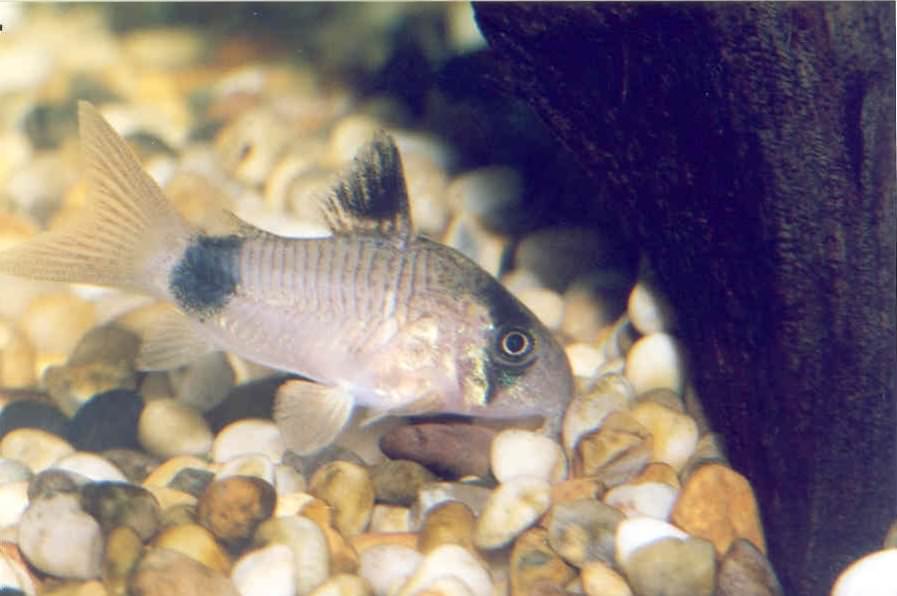
The first thing you’ll notice about this bottom-dweller is their unique coloration. These fish have a black body with white spots all over. The spots are bigger on their dorsal half and get smaller as they go down the body.
The fins on the Panda corydoras are all black except for their ventral fins. These fins are clear and help the fish move around easily in the water.
This species has a very rounded body shape that is a little bit flattened from top to bottom. They have a small head with a slightly upturned mouth. Corydoras are known for having barbels (or “whiskers”) on their face that help them find food in the substrate.
Panda corydoras are a peaceful fish that make a great addition to any community tank. They do best in groups of 6 or more of their own kind.
Lifespan
The average lifespan of a Panda corydoras is around 5 to 7 years. There are a number of factors that impact their life expectancy.
For starters. if these fish haven’t reproduced then their lifespan will usually be on the higher side of this range. That process can really take a toll on the fish.
The general level of care they receive obviously matters a great deal as well. Even though these are very hardy fish, they’ll obviously live longer in optimal conditions.
Size
The Panda Cory is a small Corydoras and will only grow to be about 2.5 inches (6.4 cm) long.
Tank
Tank Size
The recommended minimum tank size for Panda Corydoras is 10 gallons. This is a small fish that does well in groups so you will want to have at least 5 or 6 fish in your school.
As with most fish, we recommend going with a larger tank if you can. 20 gallons is a good size for a school of Panda Corydoras. This will give them plenty of room to swim and explore their surroundings.
Water Parameters
The panda cory is a popular freshwater aquarium fish that does best in a well-oxygenated tank with a sandy substrate. They are a peaceful bottom-dwelling fish that does well in a community tank.
Corys are sensitive to water conditions and need to have their water parameters monitored closely. Ammonia and nitrites should always be at 0 ppm, and nitrates should be kept below 20 ppm.
Frequent partial water changes are necessary to maintain water quality.
The following are some general guidelines for panda cory water parameters.
- Water temperature: 72 to 78 degrees Fahrenheit
- pH levels: 6.5 to 7.2
- Water hardness: 2 to 12 dGH
- Alkalinity Levels: 4-8 dKH
What To Put In Their Tank
Panda corydoras are a bottom-dwelling species of fish, so the substrate you use is important. A lot of people make the mistake of using gravel that’s too large.
These fish are small (usually only getting to be about 2 inches long), which means they can easily get stuck in between gravel pieces that are too big.
We recommend using a smaller substrate like sand. This will not only be better for their health, but it will also allow you to better see them when they’re swimming around.
As for plants, these fish are known to nibble on them from time to time. If you want to include some vegetation in their tank we recommend using something that can handle a little abuse (like Hornwort or Java Moss).
In terms of decorations, panda corydoras love to hide. This means that you should include a lot of caves and rocks in their habitat. Driftwood is also a good option.
Just be careful that the pieces you use aren’t too big. These fish are small and can easily get stuck in tight spaces.
Common Diseases
Panda corydoras are a very hardy and durable fish. They are quite resilient and can withstand a lot of different water conditions.
With that being said, they are not immune to disease. There are a few different illnesses that can affect this species, but the most common one is ich.
Ich is a very common parasite that can become quite serious if it’s not dealt with. The most obvious sign of this disease is the series of white spots that will begin to cover the body of your fish.
There are plenty of other potential diseases that can affect this species as well, but they’re not as common.
Another thing to look out for is infection from cuts. The most common cause of this is keeping your Panda corydoras in a tank with a rough substrate (or aggressive species that want to fight).
In general, the best way to prevent these fish from getting sick is to maintain the quality of the water in their tank. A tank with clean and stable water conditions always leads to healthier fish who are more resistant to disease.
Behavior & Temperament
Panda corydoras are a peaceful and social species of fish. In the wild, they live in groups of 10 or more. So, it’s best to keep them in aquariums with at least 5 of their own kind.
Panda corydoras are a bottom-dwelling species of fish. So, they spend most of their time near the bottom of the tank scavenging for food. They’re also known to eat algae off the glass and plants.
Panda corydoras are a very active species of fish. So, you can expect to see them swimming around the tank frequently. They’re also known to be jumpers. So, it’s important to have a tight-fitting lid on your aquarium.
When it comes to temperament, Panda corydoras are very peaceful. They get along well with other fish and are not known to be aggressive.
Tank Mates
Panda corydoras are peaceful bottom-dwellers that do well in a community tank. These fish are social creatures that prefer to live in groups. A single panda corydoras is not recommended.
In the wild, these fish are found in slow-moving waters in South America. They’re used to living in tight groups with other fish species.
Panda corydoras are not aggressive and get along with most tank mates. These fish are not known to nip at fins or bother other fish.
Some compatible tank mates for panda corydoras include:
- Guppies
- Mollies
- Platies
- Swordtails
- Tetras
- Rasboras
- Corydoras Catfish
- Plecostomus
Breeding
The Panda corydoras is a beautiful and popular fish that is native to South America. As the name suggests, these fish are black and white with a panda-like pattern. They’re a peaceful community fish that does well in groups.
Panda corydoras are easy to care for, making them a great choice for beginner aquarists. They’re also easy to breed in captivity.
To breed Panda corydoras, you will need a group of at least six fish. It’s best to have more females than males. These fish are egg-scatterers, so you don’t need to worry about pairings.
The first step is to set up a breeding tank. It should be at least 20 gallons in size and filled with soft, sandy substrate. The water should be clean and well-filtered. Keep the temperature between 73 and 79 degrees Fahrenheit.
Add some live plants and driftwood to the tank. These fish like to hide, so it’s important to provide them with plenty of places to do so.
Once the tank is set up, acclimate the fish to their new environment. Then, feed them a nutritious diet of live foods and high-quality pellets.
When the fish are ready to breed, you will see the females start to swell with eggs. The males will also become more aggressive.
At this point, you can remove the adults from the breeding tank. The females will lay their eggs on the plants and driftwood. The males will fertilize them.
The eggs will hatch in about four days. The fry will be tiny, so you will need to feed them micro-worms or other live foods. Once they’re big enough, you can start to feed them baby brine shrimp.
Conclusion
The Panda Cory is a great addition to any freshwater aquarium. They’re peaceful, active, and relatively easy to care for.
We love their playful nature and the fact that they’re such great community fish.
If you’re looking for a Corydoras that’s a little different from the rest, the Panda Cory is a great option.
just remember to do your research before adding them to your tank!

